En el corazón de una Oklahoma profundamente roja, los maestros redefinen la imagen de activistas laborales e inspiran a colegas asediados en otros estados rojos.
AméricadelNorte/EEUU/CIUDAD DE OKLAHOM/CAITLIN EMMA
Alberto Morejón, vestido para el negocio con una camisa blanca abotonada y corbata roja, estaba de pie cerca de los escalones del Capitolio de Oklahoma, examinando lo que había comenzado. A su alrededor, varios miles de profesores, muchos de los cuales lo conocían por su nombre, gritaban: «¡Un día más, un día más fuerte!»
Habían pasado casi dos meses desde que Morejon vio la cobertura de noticias de los maestros en West Virginia, que no habían tenido un aumento desde 2014, cuando se embarcaron en una huelga de casi dos semanas que obligó a la Legislatura republicana estatal a aprobar un 5 por ciento aumento salarial. Los salarios de los docentes en Oklahoma, como Morejon sabía bien, no eran mucho mejores que Virginia Occidental: ambos estados han sido clasificados entre los cinco peores de la nación. Morejon, un profesor de ciencias sociales y entrenador de béisbol de 25 años de Stillwater Junior High en Stillwater, Oklahoma, vio el precio que estaba tomando para sus colegas. Un colega, que se acerca a la edad de jubilación, tenía que cortar decenas de jardines después de la escuela todas las semanas para pagar la matrícula universitaria de su hija.
Entonces, mientras los maestros de West Virginia seguían en los piquetes, Morejón decidió que era hora de que su estado hiciera lo mismo. Creó un grupo de Facebook llamado «Oklahoma Teacher Walkout – The Time Is Now!». En solo tres días, el grupo aumentó a 30,000 miembros. El 8 de marzo, el sindicato presentó una lista de demandas -como un aumento de $ 10,000 para maestros y $ 200 millones para compensar los recortes en el financiamiento de educación- que amenazan con una huelga escolar masiva el 2 de abril si no se cumplen. El 31 de marzo, la Legislatura aprobó un aumento de $ 6,100, pero no fue suficiente y se llamó a la huelga. El tercer día de la huelga, me paré junto a Morejón, cerca de los escalones del Capitolio, donde los maestros agradecidos se tomaron autofotos con él, y le pregunté cuánto tiempo podría durar.
«Si piensan que nos van a esperar, están locos», me dijo Morejón. «Esto va a durar tanto como quieran que dure».
Eso fue hace una semana y los maestros todavía están en eso. Las demandas se han alejado de un aumento mayor y hacia más fondos para aliviar los recortes en la educación profunda a lo largo de los años. Los maestros han decidido que preferirían arriesgarse a una reacción pública que conformarse con libros de texto obsoletos, aulas en ruinas y semanas de cuatro días en casi un quinto de los distritos escolares de Oklahoma. El grupo de Facebook de Morejon ahora tiene más de 76,000 miembros, unas 34,000 personas más que profesores en el estado, un fuerte indicio de que la huelga de Oklahoma está teniendo una gran influencia en los maestros inquietos y mal pagados en otros estados republicanos como Kentucky y Arizona, donde Los legisladores que recortaron impuestos han acelerado los presupuestos de educación en la última década.
Morejon es un jugador clave en un sorprendente movimiento laboral de base que se ha desatado en menos de dos meses. Hasta ahora, los profesores hastiados han encontrado un apoyo inesperadamente sólido entre los votantes que de otra manera tendieron a favorecer los impuestos bajos o inexistentes. A medida que el incendio forestal se extendió hacia el oeste, los funcionarios del gobierno más responsables de esas medidas de austeridad presupuestaria parecen casi sorprendidos por lo difícil que ha sido mantener el poder político. En los primeros días de la huelga, la gobernadora de Oklahoma, Mary Fallin, trató de golpear a los maestros como ingratos malcriados, comparándolos con «un adolescente que quiere un auto mejor». El enfoque ad hominem no ha ido bien. Los docentes, muchos de ellos mujeres, están redefiniendo las actitudes sobre el trabajo organizado, reemplazando los estereotipos negativos de los obreros mal pagados y mal pagados con un rostro más comprensivo: los que trabajan demasiado y que menosprecian que dicen que están peleando por sus estudiantes tanto como ellos «. Re luchar por si mismos.
La escena festiva fuera del Capitolio estatal la semana pasada -partida política parcial, parte del concierto y parte de la fiesta de portería- no parecía un piquete típicamente sombrío. Maestros, estudiantes y padres y con los más pequeños bailaron en la «YMCA» de Village People. Las bandas escolares locales interpretaron «We’re Not Gonna Take It» de Twisted Sister. Familias enteras montaron carpas y sillas de jardín, repartiendo comida y bocadillos gratis . La gente marchaba en círculos alrededor del edificio, empuñando y agitando carteles, muchos de los cuales golpearon al gobernador. Una de ellas, que mostraba la cara de Fallin, decía: «Si la ignorancia es felicidad, entonces esta debe ser la mujer más feliz de la Tierra».
Dentro del Capitolio, la atmósfera se sentía más tensa. La gente se reunió alrededor de la cúpula central en los primeros cuatro pisos del edificio, gritando: «¡Todavía estamos aquí!» Y «¡No nos iremos!». Los maestros se abanicaron en pasillos abarrotados y exigieron reunirse con los legisladores de su estado.
Oklahoma es la batalla de maestros más candente del país en este momento, pero Kentucky y Arizona no se quedan atrás. En Kentucky, el sindicato de maestros del estado está instando a los maestros a marchar sobre el Capitolio en Frankfort el viernes después de que el gobernador republicano Matt Bevin vetó un proyecto de ley esta semana que impulsaría la financiación por alumno en el estado. También firmó un proyecto de ley de reforma de pensiones que fue aprobado rápidamente por la Legislatura estatal el mes pasado. Ese proyecto de ley de reforma de pensiones, tremendamente impopular entre los maestros, haría las pensiones más parecidas a los planes 401 (k). La aprobación de la ley desató una gran «enfermedad» el mes pasado, con los maestros asaltando el Capitolio.
En Arizona, los maestros usan ropa roja esta semana y realizan «visitas sin cita», donde se quedan afuera de la escuela y hablan con los padres y cualquiera que escuche sobre el estado de sus aulas, la necesidad de un aumento del 20 por ciento y más fondos para la educación . Al igual que Oklahoma, Arizona ha visto a muchos de sus maestros huir del estado en busca de trabajos mejor pagados en la vecina Nevada, donde un proyecto masivo de reforma educativa promovido por el gobernador republicano Brian Sandoval inyectó $ 500 millones en el presupuesto educativo. Se espera que los educadores de Arizona anuncien una fecha para su propia huelga masiva en los próximos días.
«Todos ustedes realmente nos están inspirando en este momento. West Virginia nos despertó, pero todos reafirmaron todo «, dijo Joe Thomas, presidente de la Asociación de Educación de Arizona durante una discusión remota el 3 de abril con Alicia Priest, presidenta de la Asociación de Educación de Oklahoma, que se publicó en Facebook .
«Si este es el único idioma que los políticos escucharán», dijo Thomas, «hablaremos este idioma si es necesario».
Lara Brown, directora de la Graduate School of Political Management en la Universidad George Washington y ex funcionaria del Departamento de Educación durante la administración Clinton, ha criticado a los sindicatos de docentes, que cree que en el pasado han sido una barrera para la mejora y la reforma.
Pero dijo que los docentes de Oklahoma, Kentucky, Arizona y Virginia Occidental podrían presionar a otros estados rojos -donde los recortes de fondos educativos plagan a las escuelas y recortan salarios- para tener conversaciones más amplias sobre cómo debería ser la educación pública y cómo debería financiarse.
«Los maestros son un gran electorado», dijo Brown. «Hay miles y miles de maestros en todos los estados y lo que realmente significa en el nivel práctico es que los profesores pueden organizarse y emitir el voto en forma absoluta … pero si pueden dominar la conversación nacional sigue siendo un gran signo de interrogación».
El lunes, en la página de Facebook que comenzó todo, Morejon escribió: «Al hablar con los maestros de West Virginia, me dijeron que el día más importante de la huelga fue el segundo lunes». El lunes fue el «segundo lunes» y muchos observadores estimaron la multitud en el Capitolio era la más grande hasta el momento.
***
Entre los mayores problemas de Oklahoma está el hecho de que no puede mantener a sus maestros. Se entrenan en las mejores universidades de Oklahoma y luego conducen hacia el sur, a Texas, donde las escuelas prometen miles de dólares adicionales para atraer a los mejores talentos. El salario promedio de un maestro en Texas es de $ 52,575, en comparación con $ 45,245 en Oklahoma, según datos federales. El estado de Sooner ha tenido que emitir certificaciones de emergencia a miles de personas en los últimos años para el personal de las aulas, lo que genera inquietud sobre las calificaciones. Incluso el Maestro del Año de Oklahoma dejó el estado para Texas en 2016 después de liderar una iniciativa electoral fallida para otorgar a los maestros del estado un aumento de $ 5,000.
Esa exasperación es sentida por aspirantes a educadores que apenas han comenzado sus carreras. Kristen Holland, Leah Chambers y Hallie Ball, todas estudiantes y maestras de la Oklahoma State University, me dijeron que quieren continuar enseñando en el estado, aunque saben que pueden ganar más dinero en Texas como maestras de primer año. «Las escuelas de Texas saltan a la vista y nos dicen que podemos ganar más dinero, pero quiero quedarme aquí», dijo Chambers, de 22 años .
Afuera, cuatro maestros de primaria de Norman, Oklahoma, esperaban a un amigo cerca de una fila de baños portátiles. «Puedes ir a cualquier otro lado y ganar $ 15,000 más como maestra de primer año», dijo Brenda Frieling. «Los maestros están listos».
«He tenido superintendentes en Texas gracias porque contrataron a nuestros maestros», dijo Deborah Gist, superintendente de Tulsa, quien habló por teléfono el primer día de marcha a Oklahoma City desde Tulsa, a 110 millas de distancia. «Crea una situación extraordinariamente inestable».
Los recortes educativos también pesan sobre los maestros, dijo Gist. Alrededor de una quinta parte de los 513 distritos escolares públicos de Oklahoma operan en un horario de cuatro días, obligados a encontrar una manera de reducir los costos a raíz de los recortes en la financiación de la educación estatal. Desde 2008, alrededor del 28 por ciento del financiamiento estatal por alumno, ajustado por la inflación, se ha reducido, según el Centro de Presupuesto y Prioridades de Políticas, un grupo de expertos. Los maestros que protestan se han quejado de los libros de texto obsoletos unidos por cinta adhesiva y escritorios destartalados. Una niña de 7 años descubrió que había heredado el mismo libro de texto utilizado una vez por el cantante country Blake Shelton, en 1982.
Pero los gráficos y los argumentos estadísticos no siempre ganan la batalla por el apoyo público.
Los maestros saben que están jugando un juego de relaciones públicas, lo que explica por qué Gist y cerca de 150 de sus colegas están durmiendo en los gimnasios escolares a lo largo de su recorrido desde Tulsa a Oklahoma City. Miden la buena voluntad en la voluntad de las personas de llevarles alimentos y bebidas, pero esa no será la medida de la durabilidad de su causa. Eso se decidirá en las cámaras de la Legislatura estatal.
«No podemos alejarnos de este momento y pensar que alcanzamos el éxito», dijo Gist.
***
Definir el éxito pesa en los dirigentes sindicales como Ed Allen. Allen es presidente de Oklahoma City American Federation of Teachers, un sindicato local de afiliados sindicales, y aunque está entusiasmado con la posibilidad de traducir la energía de la huelga a las urnas en noviembre, le preocupa una estrategia de salida y la falta de ella. de uno le servirá a un movimiento obrero de base que cuenta con amplio apoyo público, al menos por ahora.
«Mientras más te alejas de Oklahoma City, menos pasión tienes», me dijo. «Si tus hijos no van a la escuela por un par de semanas, los que te apoyaron en algún momento van a empezar a decir: ‘Sí, lo entiendo, estoy contigo, pero toma la victoria y sigue adelante la carretera.’ Pero cuando caminas entre la multitud [en el Capitolio], la gente se emociona y no está lista para escuchar: «Vámonos a casa». Y aún no estamos listos para decirlo. Entonces no lo sé «.
Parte de esa frustración está surgiendo de legisladores estatales y padres en partes más rurales del estado. Allen dijo que habló con un representante en uno de esos distritos menos poblados. «Y él dijo: ‘¿Sabes que cuando hablo con mis electores me dicen que alguien está descontento con un aumento de $ 6,000? No lo estamos entendiendo del todo «.
En un video que se viralizó esta semana y que luego fue borrado, el representante estatal Kevin McDugle, un republicano de primer año, dijo que no votaría «por otra medida apestosa cuando (los profesores) actúen de la manera en que actúan». Poco después , una maestra de segundo grado de Oklahoma anunció que se postularía para su puesto. (No fue la única maestra que decidió postularse para el cargo cuando se abrió la ventana de registro esta semana).
Una tarde, mientras los maestros en la ciudad de Oklahoma seguían sacudiendo a los legisladores estatales, decidí ver si podía tomar la temperatura fuera de la capital. Conduje hasta la pequeña ciudad de Guthrie, a una media hora de la ciudad de Oklahoma, donde una fina capa de polvo rojo cubre muchos de los automóviles. Las escuelas cerraron durante la semana debido a las huelgas.
«Es difícil encontrar cosas que hacer aquí», dijo Jason Smith, un estudiante de secundaria, mientras almorzaba en McDonald’s con su abuela, Tamara Smith. Dijo que apoya a sus maestros y a su causa, pero que quiere volver a la escuela porque pasa los días sentado mirando YouTube.
Su abuela dijo: «Los apoyo tratando de obtener mejores fondos para la educación, pero quiero decir, ya es suficiente, ¿no?».
Al otro lado de la calle, en Walmart, una madre que da clases a sus hijos en casa y que dijo que no se sentía cómoda al ser identificada por su nombre, dijo que los paros pueden poner a prueba a una comunidad que ya lucha. Más del 60 por ciento de los estudiantes de Guthrie son elegibles para almuerzos gratuitos o de precio reducido, según datos federales. Las iglesias en el área están repartiendo almuerzos a los estudiantes que no están en la escuela y trabajando para mantener a los niños entretenidos, a veces conduciéndolos a la ciudad de Oklahoma para ver una película.
De vuelta en el Capitolio estatal, los maestros corearon: «2, 4, 6, 8, queremos que legislen». En el interior, los legisladores estatales debatieron varios proyectos de ley que podrían aumentar los ingresos por educación para Oklahoma en decenas de millones de dólares, pero no está claro qué facturas o qué cantidad de dinero finalmente terminará las huelgas.
«Realmente tomaría cerca de $ 1.5 mil millones para compensar 10, 11 años de recortes en la educación en Oklahoma», dijo Allen de la Federación de Docentes de Oklahoma City American. «Ahora, si alguien piensa que va a hacer eso todo en un año, en una factura, realmente no se puede hacer».
Si bien los legisladores del estado de Oklahoma han aceptado algunas de las demandas de los maestros, se han negado a ceder ante otros.
El gobernador Fallin firmó un proyecto de ley esta semana, revocando un impuesto de alojamiento propuesto que habría recaudado alrededor de $ 50 millones para la educación. También parece que no hay apetito para terminar con una rebaja de impuestos que beneficia a miles de acaudalados habitantes de Oklahoma, conocida como la deducción de ganancias de capital del estado. La Asociación de Educación de Oklahoma ha señalado que poner fin a esa desgravación fiscal es una prioridad importante, diciendo que podría proporcionar alrededor de $ 120 millones al año en dinero nuevo para la educación pública. Los docentes aún tienen esperanzas, ya que los legisladores estatales consideran los cambios a los créditos fiscales para las empresas de energía eólica, lo que podría canalizar más dinero hacia la educación pública.
Luego de una gran participación en el segundo lunes de la huelga, la multitud de manifestantes disminuyó un poco el miércoles ya que algunos maestros sintieron el retroceso a la escuela. En lo que algunos vieron como una señal del comienzo del fin, la Asociación de Educación de Oklahoma comenzó a enfatizar las ganancias que los maestros han asegurado hasta ahora, como un estimado de $ 22 millones en ingresos educativos adicionales del juego de azar «ball and dice». La huelga no ha terminado todavía. Más de dos docenas de distritos escolares -todos menos dos de los más grandes, que prestan servicios a casi la mitad de los estudiantes de escuelas públicas del estado- anunciaron que cerrarían el jueves, algunos hasta el viernes.
Fuente: https://www.politico.com/magazine/story/2018/04/12/teacher-strikes-oklahoma-city-kentucky-west-virginia-217849
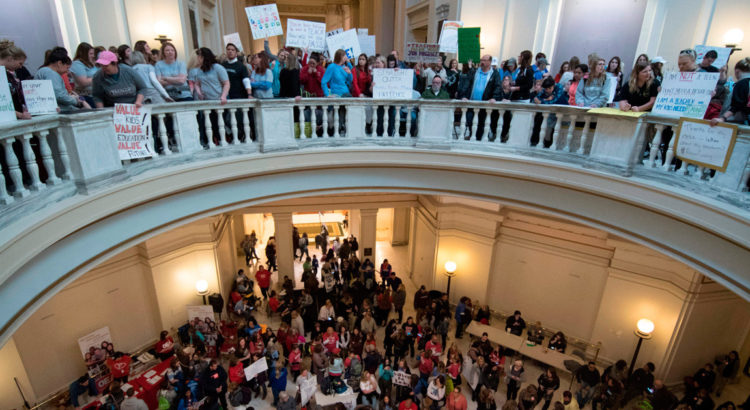

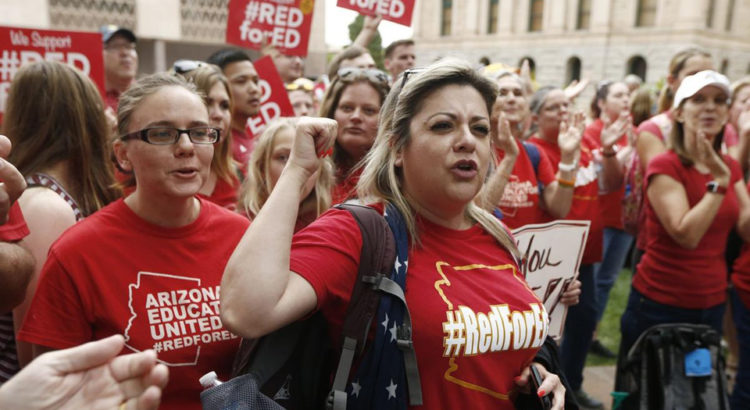
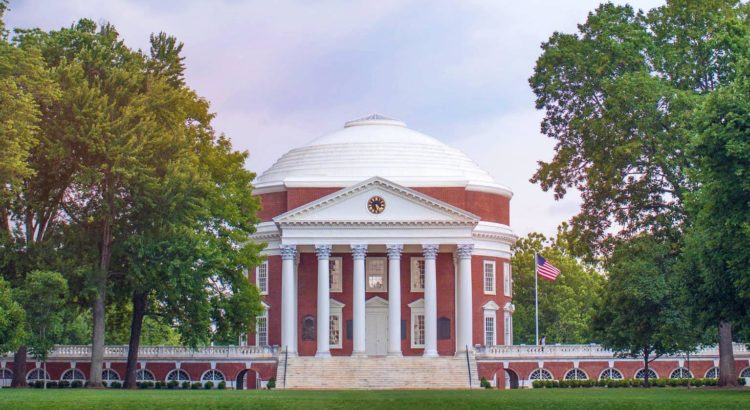
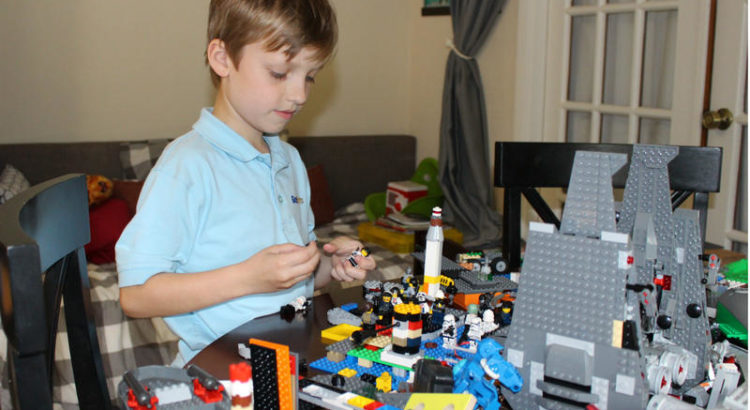

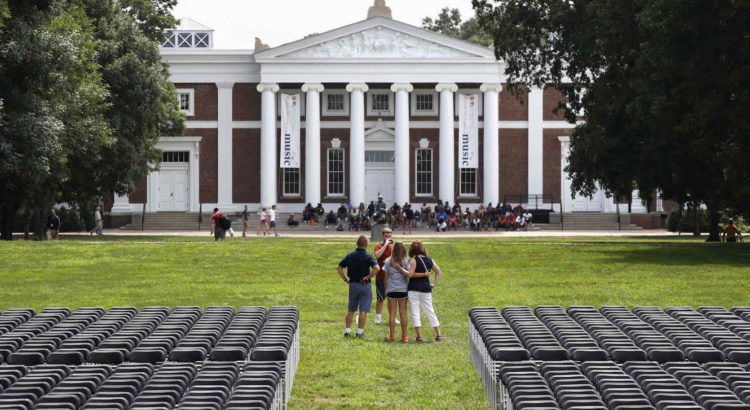













 Users Today : 6
Users Today : 6 Total Users : 35460389
Total Users : 35460389 Views Today : 14
Views Today : 14 Total views : 3419177
Total views : 3419177